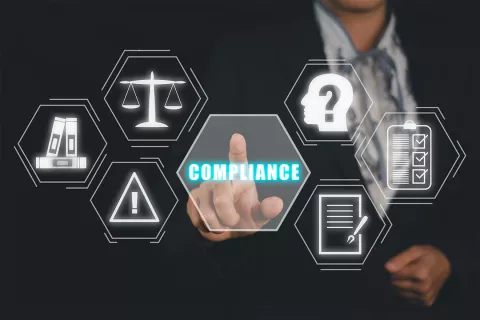
As a medical device manufacturer, you must understand and prepare for the United States Food and Drug Administration’s (US FDA’s) inspections to maintain compliance and ensure that your medical device can be marketed and distributed without legal impediments. The US FDA’s Regulatory oversight includes ensuring that devices are safe, effective, and meet the necessary quality standards. Here is what you need to know about the US FDA’s inspections and enforcement actions and how to prepare for them.
Understanding US FDA Inspections
US FDA inspections form a critical part of the Regulatory oversight of medical devices. They can occur at any stage of the product lifecycle, from pre-market submission to Post-market Surveillance (PMS). The FDA evaluates a manufacturer’s compliance primarily by conducting manufacturing facility inspections of both domestic and foreign manufacturing sites.
During an inspection, the US FDA’s investigators will review your facilities, design controls, manufacturing operations, environment, and records. For certain devices like surgeons’ gloves, they will place added emphasis on compliance with the Quality System Regulation (QSR) (21 CFR Part 820). The FDA's manufacturing facility inspection program is risk-based and may also include a review of any FDA-received complaints, Medical Device Reporting (MDR) submissions, recalls, and newly marketed products.
What to Expect During a US FDA Inspection?
When the US FDA conducts an inspection, they will assess various aspects of your operations. This includes the quality of the design, manufacturing processes, and the environment in which the devices are produced. Inspectors will also review your documentation and records to ensure that they align with the Regulatory requirements.
If the US FDA identifies any non-compliance issues, they may issue an FDA Form 483, which lists observations made during the inspection that the agency considers to be in violation of their regulations. It is important to address these observations promptly and effectively.
What Aspects of a Medical Device Manufacturer Does the US FDA Evaluate during Factory Inspections?
During factory inspections, the US FDA evaluates the following aspects of a medical device manufacturer:
- Facilities: The US FDA reviews the manufacturer’s facilities to ensure that they are appropriate for conducting manufacturing operations.
- Design Controls: As mentioned earlier, for certain devices like surgeons’ gloves, the US FDA assesses design controls to ensure that the device is designed to meet its intended purpose.
- Manufacturing Operations: The US FDA inspects the processes and operations used in the manufacturing of a medical device to ensure that they are consistent with the quality standards.
- Environment: The inspection includes an assessment of the manufacturing environment to ensure that it is suitable for the production of medical devices.
- Records: The US FDA reviews various records, including those related to the design, manufacture, and testing of a medical device, to ensure compliance with the Regulatory requirements.
- Compliance with the QSR (21 CFR Part 820): The US FDA places significant emphasis on compliance with the QSR, which includes Quality Management Systems (QMS) requirements, production and process controls, and other critical aspects of manufacturing.
- Compliance with Recognized Standards: The US FDA checks whether a device is manufactured in compliance with recognized standards, such as ISO 13485.
- Power Supply Compatibility: For devices that require a power supply, the US FDA checks if they are compatible with the US voltage, frequency, and plug type standards or if they come with an appropriate power supply adapter.
- Documentation: The US FDA verifies whether the manufacturer or importer has proper documentation of compliance with the relevant quality systems and standards.
These inspections are conducted at both domestic and foreign manufacturing sites, and the US FDA also contacts foreign firms to schedule inspections as part of their program.
Preparing for a US FDA Inspection
Preparation is key to ensuring a successful US FDA inspection. Here are some steps you can take to be well-prepared for the inspection:
- Understand the Regulations: Familiarize yourself with the QSR and other relevant US FDA regulations and guidance documents. The US FDA provides a wealth of resources, including the Guidance Search Tool, to help you identify the relevant guidance documents.
- Conduct Internal Audits: Conduct regular internal audits to ensure that your quality system complies with the necessary regulations. This will help you identify and correct any potential issues before a US FDA inspection.
- Train Your Staff: Ensure that your staff is adequately trained on US FDA regulations and that they understand the importance of compliance. They should be prepared to answer questions and provide the necessary documentation during an inspection.
- Maintain Proper Documentation: Maintain thorough and organized records of complaints, Medical Device Reporting (MDR), and corrective actions. The US FDA may inspect and copy all records related to their investigation.
- Conduct Mock Inspections: Consider conducting mock inspections as practice runs for the real one. This can help identify weaknesses in your processes and prepare your team for the types of questions and requests that may come from the US FDA inspectors.
- Take Corrective and Preventive Actions (CAPAs): If you have previously been issued an FDA Form 483 or a warning letter, ensure that you have taken the necessary CAPAs to address the issues raised.
- Focus on Post-inspection Actions: After an inspection, it is important that you review the findings and observations with your team. If you receive an FDA Form 483, respond in writing with your corrective action plan within the timeframe provided by the US FDA. This demonstrates your commitment to compliance and may serve to prevent further enforcement actions.
Understanding the US FDA’s Enforcement Actions
The US FDA holds the authority to take enforcement actions against non-compliant firms. These actions can range from warning letters and import detentions to more severe consequences such as import alerts and injunctions. Thus, compliance with the US FDA’s regulations is mandatory, as enforcement actions can have significant implications for your business.
To sum up, the US FDA’s medical device inspections are vital for ensuring the safety and efficacy of medical devices. By understanding what to expect and how to prepare, you can navigate the inspection process with confidence. Remember, your goal is not just to pass an inspection but also to ensure that your products consistently meet the highest quality and safety standards. Proactive preparation and a commitment to compliance are your best strategies for a successful US FDA medical device inspection and continued market access. Do you need assistance in preparing for the US FDA’s medical device inspection? Reach out to us now!









